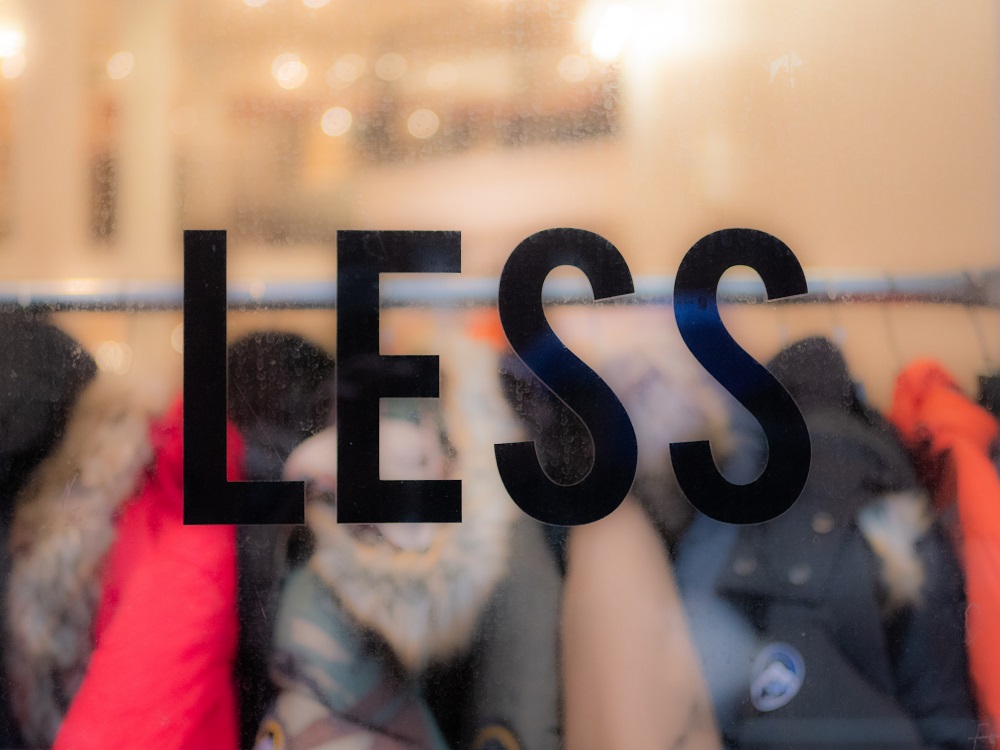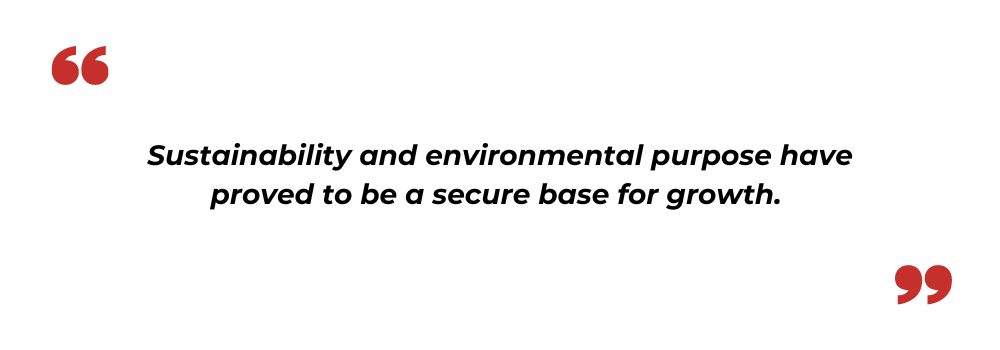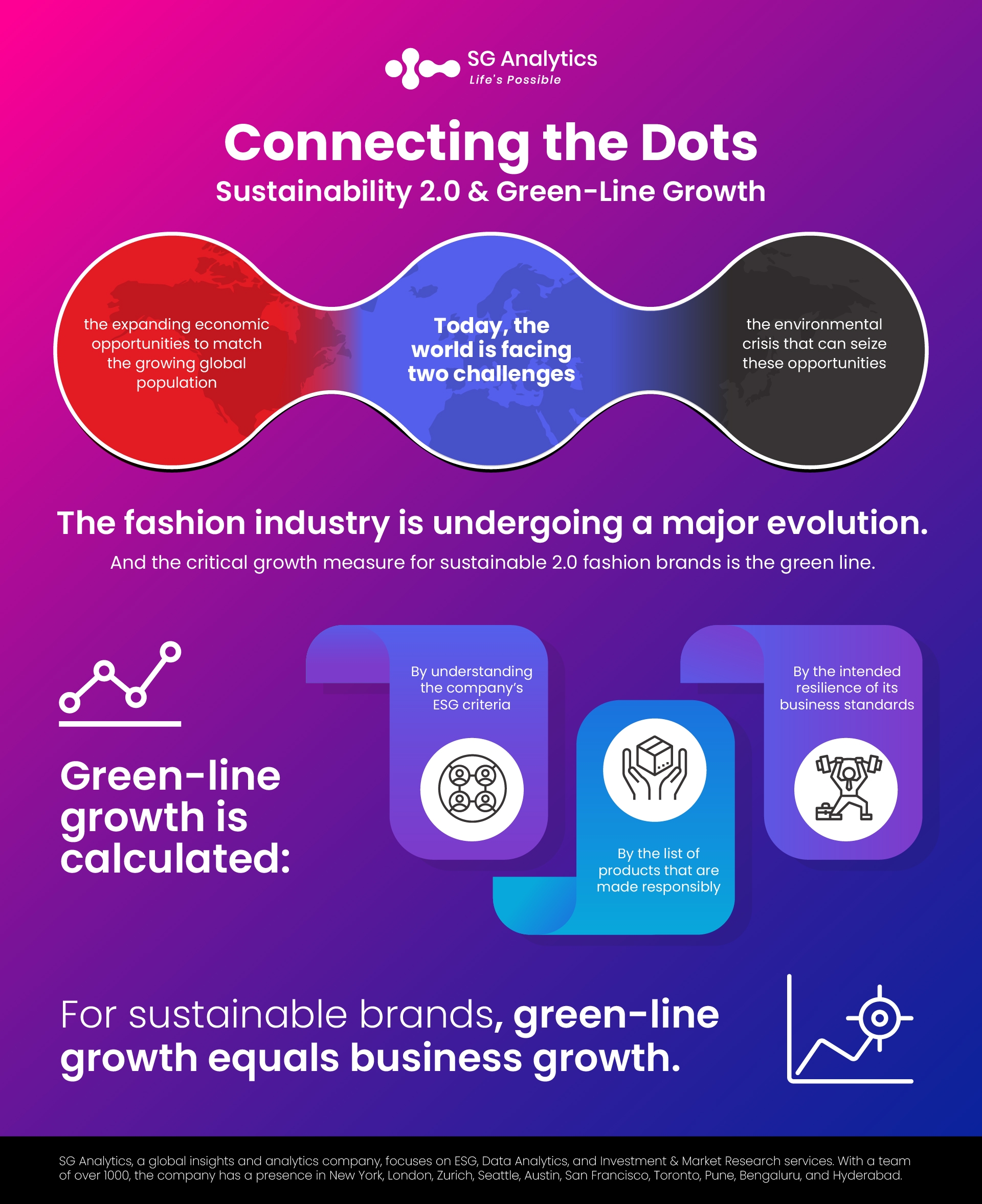Today, the world is advancing and changing with the everyday digital transformations. When Web 2.0 was introduced, it became a web platform that supported applications, network solutions, and social media. It quickly became an integral element of everyday life and still thrives today.
Now, with the dawn of decentralized, blockchain-based, the world is pacing towards IoT-driven Web3. Beyond being a core part of everyday functionality, Web3 is actively redefining everyday tasks. With every advanced version of the web, its potential is becoming more ingrained.
However, the world is facing two challenges: exploring and expanding economic opportunities to match the growing global population and addressing the environmental crisis that holds the potential to undermine our ability to seize these opportunities. Green growth is where these two challenges combine, which refers to influencing the opportunities to realize the two together.

The industry is now ushering into a movement to create a greener and more equitable planet. It is also promising to display new ways of driving sustainable success. Is this a new trend, or is the fashion industry really on the path of a sustainable makeover?
Read more: Green Finance: The Next Step to Align India's Climate Priorities
On the Journey to Establishing Sustainability
Today, the fashion industry accounts for about 8% of global greenhouse gas emissions and around 20% of the world’s wastewater. The sheer complexity of fashion supply chains, along with the lack of transparency into operations, has compelled them to move on the path of operating in a more sustainable manner. To be a part of the sustainability evolution, fashion brands are waking up to the realization of the regulation.
-
Fashion brands are learning the ways to operate in ways that have less impact on the environment and vulnerable populations.
-
With governmental and standards bodies proposing new legislation to spur more sustainable practices as well as public pressure, brands are ensuring ways to incorporate practices that are sustainable.
-
Brands are now taking steps to fix the least sustainable parts of their operations and increase their transparency throughout supply chains.
All these incorporations are leading the fashion sector to Sustainability 2.0, which will further drive their regulations and demand to achieve environmental, social, and governance (ESG) goals.

Read more: The Fight Against Greenwashing: Are Money Funds the Next Target?
Defining Sustainability 2.0
The COVID-19 pandemic led to drawing a clear line between corporate winners and losers. Those who were able to able to exploit the soaring demand for digital services and health-related applications sailed smoothly through the storm. However, the pandemic also served as a clear accelerant for tech-driven businesses, not just in the digital health space but also in public adoption levels.
In similar terms, sustainability in the fashion industry is also undergoing the same evolution.
An integral element of an organization's business model and core strategy, sustainability 2.0, is deemed the right formula for growth. Rather, it is an engine that supports business outcomes. Often a company’s performance is evaluated based on its top-line and bottom-line growth. But with Sustainability 2.0 organizations, the critical growth measure is measured on the green line, a strategic attention measure for sustainability that assists in driving the business.

Green-line growth is calculated in the following three ways:
By understanding the company’s ESG criteria along with the demonstrable steps they take to fulfill those criteria, which include-
-
Have they appointed a sustainability officer?
-
Are they committed to diversity in hiring?
-
Do they measure their operation as per the stated, measurable, environmental impact goals?

By the list of products that are made responsibly, in agreement with applicable standards
-
Does the organization disclose every aspect of its product, including its origins, in order to prove its ethical compliance and to build confidence in its consumers and investors?
By the intended resilience of its business standards to reduce the risks of the climate crisis -
-
Do they incorporate and work towards meeting the widely adopted sustainable goals for emissions reduction?
-
How do these goals affect the way they operate?
Many sustainability 2.0 enterprises today are moving on the path to adopting science-based targets (SBTs) in order to identify their dependencies on the environment as per their business models. This can include - the burning of fossil fuels at their supply chain stages. Brands adopt SBTs to evaluate the impact of those dependencies as well as to gain a better understanding of what changes should be incorporated into or eliminated from those dependencies to build a sustainable operational framework.

Read more: Trends that are Empowering the ESG Revolution in 2022
Understanding the Green-Line Growth
While green growth can be perceived as a replacement for sustainable development, it is clearly not. Rather, it offers organizations a flexible approach to achieving measurable progress across its economic and environmental pillars. It also empowers them to take full account of the social consequences of greening dynamic economic growth.
Today, green growth strategies are focused on ensuring that natural assets can deliver their full economic potential on a sustainable foundation. This potential involves the provision of critical services, including clean air and water, along with the resilient biodiversity required to support food production and human health.

Green growth policies form an integral part of the structural reforms required to foster strong, sustainable growth. They can enable organizations to unlock new growth by-
- Improving productivity and creating stimuli for greater efficiency in the use of natural resources, thereby reducing waste and energy consumption. This is likely to pave the way to unlock new opportunities for innovation and value creation.
-
Cultivating investor confidence through greater predictability in environmental crisis.
-
Exploring new markets by fostering demand for green goods and services.
-
Contributing to mobilizing revenues through green taxes and elimination of environmentally harmful contributions. These measures can assist in generating or freeing up existing resources for anti-poverty programs in areas with poor investments.
-
Decreasing risks of negative shocks to growth due to resource bottlenecks and irreversible environmental impacts.
Green growth signifies fostering economic growth and development while assuring that all the natural assets prevail and continue to offer the right resources and environmental services that are crucial for our well-being. To do this, it is vital to catalyze investment and innovation, which will support sustained growth, thus opening new economic opportunities.
Read more: Driving Sustainable Innovations: AI for ESG Data Challenges

The Path Ahead to Sustainability 3.0
What will Sustainability 3.0 look like? If the world experiences a Web3 revolution, sustainability is likely to evolve further, too.
Sustainability 3.0 brands are sustainably driven enterprises first and then businesses. Just like retailers are deemed as omnichannel or all-digital enterprises, Sustainability 3.0 companies are considered natively sustainable. Sustainability 3.0 brands start with selling sustainable products as that's what they abide by in their operational values. For them, making a profit comes second in line, as they are driven by their ESG commitments.
Fashion brands including Pact, Allbirds, and Patagonia are some of the examples of what Sustainability 3.0 companies represent. And they are just getting started. For industry leaders interested in advancing on the path of sustainability, it is vital to incorporate accurate, structured, comparable, and granular-level data when developing their sustainability goals.
Credible and robust data-driven insights are employed to form a strong foundation of sustainability commitment. When promoting green credentials to customers and stakeholders, brands should plan the action behind these claims. Brands need to stand up to scrutinize their actions. Without incorporating these metrics in their plan, it can often be portrayed as a marketing spin or greenwashing.
To make the right predictions, run scenarios, identify unethical resource consumption, respond better to changing demands, along with minimizing the impact of internal and external shocks, brands need to employ data to the right use. With these combined benefits, fashion brands will be able to translate their actions into success with higher growth, lower costs of operation, raised market share, adequate return on investments, and an improved return to all stakeholders.
For sustainable 2.0 and 3.0 companies, incorporating sustainability is just like a C-suite function. One that assists in complete auditing and compliance accountability. Sustainability is so tightly woven into its business plan that its processes, operations, as well as solutions, are designed to meet the company’s commitments along with demonstrating earned gains in the process. For sustainable brands, green-line growth equals business growth.
With a presence in New York, San Francisco, Austin, Seattle, Toronto, London, Zurich, Pune, Bengaluru, and Hyderabad, SG Analytics, a pioneer in Research and Analytics, offers tailor-made services to enterprises worldwide.
A leader in ESG Consulting services, SG Analytics offers bespoke sustainability consulting services and research support for informed decision-making. Contact us today if you are in search of an efficient ESG integration and management solution provider to boost your sustainable performance.









